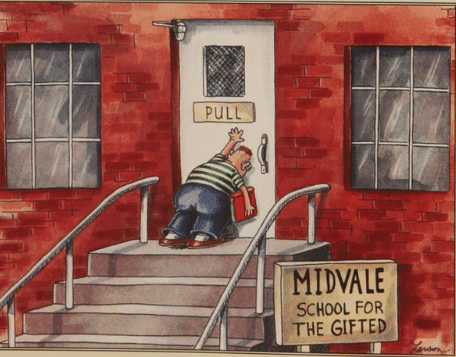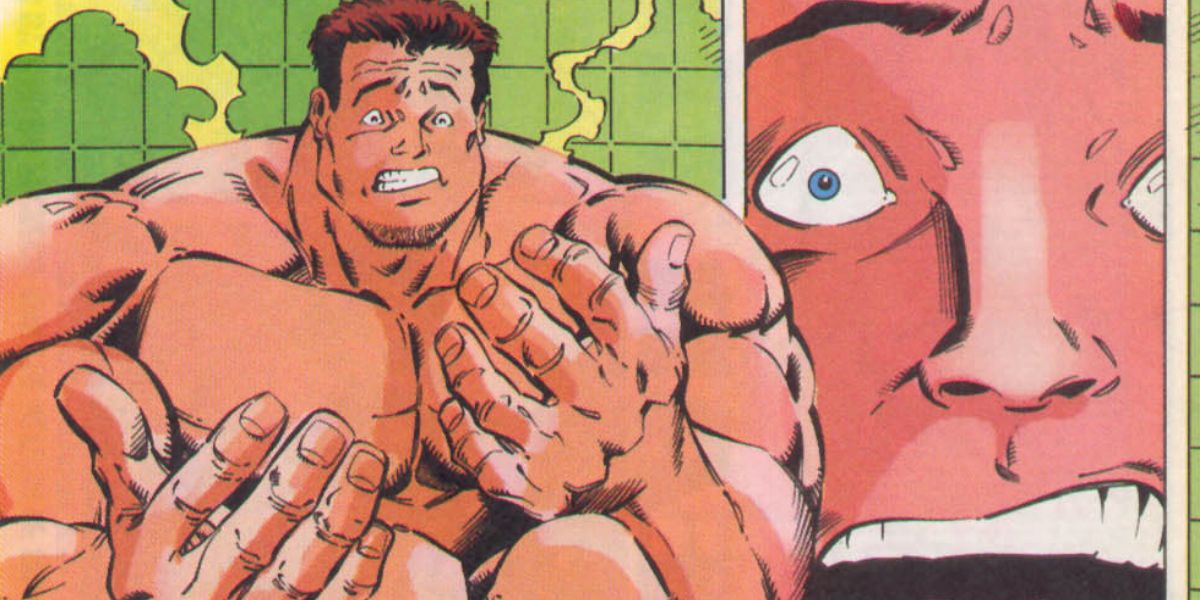The person who said “there are no stupid questions: just stupid people” was most likely a stupid person who asked a lot of stupid questions. There are ABSOLUTELY stupid questions, especially in the realm of getting bigger and stronger. Allow me to discuss some.
 |
| "STOP GATEKEEPING!" |
* “How much strength/size will I lose?” This stupid question comes up for a variety of reasons. Someone got injured, has a scheduled surgery, is taking a vacation somewhere without gym access, plans to go backpacking through Europe, etc etc. The reason doesn’t matter, because the answer will be the same: you’ll find out. Because really: what does the answer matter? Is there some specific threshold that, if crossed, will cause you to alter your plans? “ThirTEEN pounds of muscle? No sir! 12 I was ok with, but now I’m canceling the trip!” No, just stop: your fate has already been decided. You’ve made a choice, your choice has consequences, you’ll experience those consequences and then you’ll move on. We refer to that as “life”. And as an aside, folks, for f**ks sake, the human body does NOT lose muscle that quickly. If you lose ANY muscle after only 2 weeks off, seek IMMEDIATE medical attention, as you most likely have some sort of muscle wasting disease, flesh eating bacteria, or a parasite. “Quickly gained, quickly lost”. Muscle takes a LONG time to gain, and once it’s there, it’s pretty stubborn.
* “How bad is it?” Once again, various reasons. How bad is one drink a night? How bad is one cigarette a day? How bad is it if I skip ab work? If I train 2 days in a row? Etc. Once sort of metric of “degrees of badness” are you wanting employed here? “It’s 4 bads” You know it’s bad: that’s why you’re asking in the first place. You also CLEARLY don’t care that it’s bad, or else you’d STOP DOING IT. All you’re looking for is re-assurance. “It’s not that bad”. You know who will give that to you? Enablers. You don’t need those. How bad are enablers? Real bad.
* “How long will it take?” Once again: does it matter? How long will it take to get to a 300lb bench? How long will it take to cut down to 6% bodyfat? How long will it take to add 20lbs of muscle? You’ll find out! What are you going to do when you get an answer? If I tell you it takes 14 weeks to get to 6% bodyfat an you do it in 12, are you going to demand a refund from me? If the answer is too long are you just plain not even going to start? Hey, sorry for the reality check on this one, but if you’re trying to prep for next summer: you already failed. People who look good next summer started prepping TWO summers ago. BUT, that means, if you start NOW, you’ll look great in 2 summers. If you quit now because it’s going to take too long, guess how you’ll look in 2 summers. The best time to start was yesterday.
* “Do I have bad genetics?” What does it matter? Unless you’re asking this question from a jazzed up Delorean, there is nothing you can do with this information. You have the genetics you have: they are what they are. You want an answer? Ok: when you look at your hands, do you have 2 of them, and an even distribution of 10 fingers? What about your feet? Two of them and 10 toes evenly distributed? You, my friend, are genetically blessed. Born with full function: go conquer. Don’t squander these gifts.
| They have short collarbones! |
* “What is the most optimal?” Oh here we go. Hey, here’s the thing: YOU are not optimal. How do I know? Because you’re looking up training! The optimal dudes out there are so blessed that they NEVER had to think about this stuff: they went out and crushed it. Meanwhile, the optimal crowd studied SuperTraining in their basements so that they could finally join the illustrious 1000lb club, never realizing that club was for 1000lb SQUATTERS. You aren’t optimal, nor will you ever be, so quit concerning yourself with optimal methodology. The majority of the world is average, primarily, because, that’s how “average” works. If you can be just ONE standard deviation above that, you will stand out in the crowd. Once again: because that’s how standard deviations work. All that requires is being “pretty good” at something. There are SO many “pretty good” methods out there. And guess what? The difference between “optimal” and “pretty good” is going to be practically insignificant to any sort of outside observer. I always like to show this with math. People like to say things like “A natural trainee can only put on 40lbs of muscle in their life, assuming they do everything right”. Cool: 40lbs for optimal. What kind of results does a sub-optimal method get you? Only 90%? That’s 36lbs of muscle…is anyone going to notice those 4lbs? 80%? 32lbs of muscle. Again: that’s a LIFECHANGING amount of muscle to put on. And meanwhile, you picked a method of training that YOU personally respond to, such that you’re willing actually dedicate yourself to it, work hard, and get results. You end up doing MUCH better than if you try to pledge allegiance to the banner of optimal and just phone it in.
* “Are there any studies?” Let me answer your question with a question: do you have the necessary training to be able to interpret a study I provide you? What, exactly, is your scientific training and background? Because if you DO have one, clearly you understand just how meaningless studies can be. Stats can easily be manipulated, variables confounded, poor samples selected, etc etc. A study PROVES nothing. Again: someone with actual scientific training understands that. A study merely documents something we’ve observed, through which we can draw conclusions. Prior to studies, we had hand me down knowledge from dudes in the trenches. AND IT WORKED. If you want a study, someone out there probably did it, but it’s not going to do you any good unless you go out and TRY something.
Honestly folks, I could go on, but look at what all of these have in common: they’re all about avoiding risk. Specifically, the risk of the unknown. These are the questions asked by people who refuse to give up control and, in doing so, are completely NOT in control. When you refuse to ever try something NOT KNOWING the outcome, you lock yourself into a VERY fixed and static pattern. And guess what: fixed and static is how you stay the same. If your goal is physical transformation, you are going to need to do DIFFERENT things than what you’ve been doing, and this is going to mean venturing FAR outside your comfort zone. Comfortable people LOOK comfortable: which is to say, soft and squishy. Uncomfortable people look like the products of discomfort: they are hardened and rugged. They perform like those that are the products of discomfort. They transform as a result of the discomfort, because that is the only option if one wishes to endure.
 |
| Comfort not found |
So if you want a sure thing, bet on this: it’s not going to be comfortable and you won’t know the answers until you try.












/cdn.vox-cdn.com/uploads/chorus_asset/file/19228193/6D5A1400.jpg)
















